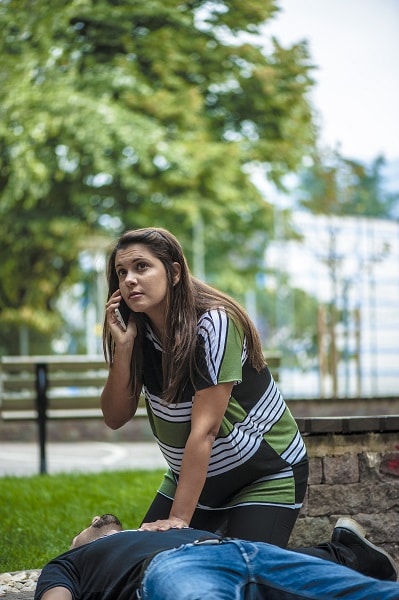Fainting can be due to many reasons. One of the reasons can be the changes in the nervous and the circulatory system. When the sugar level drops or the blood level decreases, then you could faint. When the blood supply does not reach the brain, the oxygen level becomes minimal as there is no supply in the brain, making the person fall to the floor. Once again, when the blood reaches the brain, the oxygen level is back, and the person gains consciousness. This happens a couple of minutes after they have fainted. However, it doesn’t mean that if a person faints, they have a severe health problem and need to go to the hospital, but at the same time, it should not be taken for granted, especially when there is no apparent reason for the loss of consciousness.
It is unnecessary that fainting is related to some medical condition, but treat loss of consciousness as a medical emergency until the one gain consciousness or help arrives.
A person can faint when their sugar level drops. There can be several reasons for this, like fasting, having diabetes, and regularly taking insulin shots and other medicines. If they are not having a proper diet and are taking too many medications, their sugar level in the blood can drop, which can make them faint.
Also, when you’re pregnant, it is easy for a pregnant woman to become dehydrated, and her body changes a lot as the uterus expands, so it can block the large vessels that supply the blood to the brain, which can cause fainting.
What To Do In The Moment

Other emotional reasons can be causes of fainting, like anxiety, stress, fright, panic, etc.
- If you lose your senses even a little bit, then lie down or squat immediately. If you’re sitting and you feel faint, then put your head in between your knees. These positions will help the blood to flow easily to the brain since the heart will no longer be working against gravity.
- If someone has fainted, then make them lie down on their back and make sure they are breathing. Then lift the person’s legs above the heart level so that the blood can flow to the brain.
- If they are wearing something tight, then loosen their collar and belt to breathe.
- If the person stops breathing, immediately give CPR, and call 911. Please continue to provide CPR till he starts breathing and till help arrives.
- Once the person gains consciousness, don’t let them sit up or get up immediately.
- If the person is on medications or diabetic, give them sugar candy to suck, it will help raise their blood sugar level in their body.
- When a person faints, they do not experience muscle spasms. If this occurs, call 911.
Call 911

If you see the condition worsening like the person stopped breathing and is not moving at all, either showing some life signs, then immediately call 911. Till then, please continue to give them CPR and all the precautions above. Calling 911 is an emergency number that assists you and sends immediate help.
Conclusion
Fainting or loss of consciousness can be either life-threatening or could not be serious at all. It could be threatening, such as the end of life, or can also be a sign of passing out, such as loss of blood supply to the brain. When a person faints, or even you, you know the precautions to take; make sure to follow them according to the faint person’s activity. Being unconscious is not a sign of death or something that is threatening. Taking proper medical measures can help you aid the person sometimes, even without calling 911.


